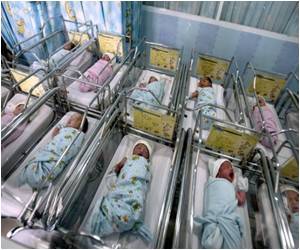In the US, over one-third of childbirths between 2006 and 2010 were the outcome of unintended pregnancies, reveals a new report.

The report is based on data gathered during the National Survey of Family Growth, which was conducted by the Centers for Disease Control and Prevention.
The findings showed that in total, 37.1 percent of pregnancies in 2006 to 2010 were unintended; the rate in 1982 was 36.5 percent.
The rate rose to 39.1 in 1988, before falling to 30.6 in 1995, Fox News reported.
Reducing the rate of unintended births is important because these births bring social, economic and health consequences for the mother and child, the researchers said.
Women who become pregnant unintentionally have higher rates of delaying prenatal care, smoking during pregnancy and not breast-feeding.
Advertisements
Among married women, 23.4 percent of births were unintended, the data from 2006-2010 showed. Half of births to unmarried women living with a partner were unintended.
Advertisements
According to the report, the highest rate of unintended births was seen in young women in this group - 78.9 percent of births to unmarried women ages 15 to 24 were unintended.
Unintended pregnancies include both pregnancies that are unwanted, and those are mistimed, meaning the woman said she wanted to become pregnant at some point, but not at the time she did.
Women's education levels also made a difference. About 83 percent of births to college-educated women were intended, while 59 percent of births to women with less than a high school diploma were intended.
Researchers asked women who were not using contraception at the time they conceived about their reasons.
They found that 35.9 percent said they did not think they could get pregnant.
Additionally, 23.1 percent said they would not mind if they became pregnant, 17.3 percent said they had not expected to have sex, 14.3 percent said they were worried about the side effects of using birth control.
Eight percent said their male partner did not want to use birth control himself, and 5.3 percent said their male partner did not want them to use birth control.
Researchers conducted in-person, 80-minute interviews with a nationally representative sample of 12,279 women ages 15 to 44, to get information about the factors affecting birth and pregnancy rates.
They also analyzed data gathered during previous surveys conducted in 1982, 1988, 1995 and 2002.
The data are based on pregnancies that ended in live births; those that ended in miscarriage, stillbirth or abortion were excluded.
Source-ANI









